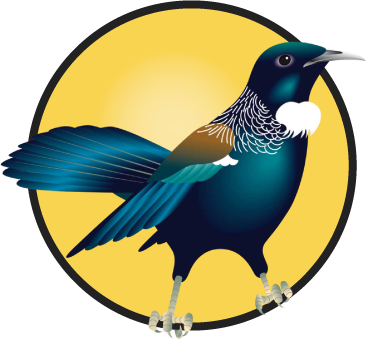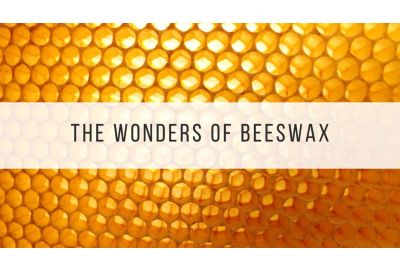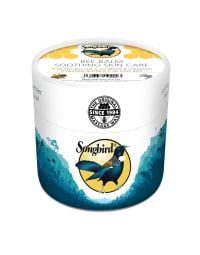Beeswax is a remarkable, all-natural wax substance that has been utilised for thousands of years. It also happens to be one of the ingredients we use most of all here at Songbird Naturals, and we have a genuine love and appreciation for this humble ingredient from mother nature.
In this blog, we’ll be exploring some of the historical and modern-day uses of beeswax, as well as its benefits for cosmetic purposes.
About Beeswax
Beeswax is a natural wax produced by honeybees. The wax is formed into scales by the wax-producing glands of worker bees, who discard it at the hive. These wax scales are then collected by the hive workers and used to create the distinctive hexagonal honeycombs we’re all familiar with. The hexagonal cells within the wax structure are used by honeybees for honey storage and larval and pupal protection within the beehive.
The exact composition of beeswax varies with location, but it’s generally comprised of approximately 71% esters, 15% hydrocarbons, 8% free fatty acids, and 6% other components.
Beeswax can be obtained after the removal of honey, by melting the honeycomb and straining the wax to remove impurities. The colour of beeswax varies from nearly white to brownish, but is most often a shade of yellow. This depends on the purity and region of the wax, as well as the type of flowers gathered by the bees. In cosmetic grade beeswax, the three main beeswax products are yellow, white and beeswax absolute. Yellow beeswax is the crude product obtained from the honeycomb, whereas white beeswax has been bleached or filtered. Beeswax absolute is yellow beeswax that has been treated with alcohol.
Beeswax is brittle when cold, but more malleable at room temperature. It softens further at body temperature, making it a suitable ingredient within cosmetics.
Historical and Modern-Day Uses of Beeswax
Beeswax has been utilised by humans since prehistoric times as the first ‘plastic’. In fact, humans’ interaction with beeswax has been dated back to Neolithic times, with reports of a 6500-year-old tooth containing traces of a filling made from beeswax.
Although beeswax is a common ingredient in modern-day cosmetics, it’s not so much of a modern discovery. In Ancient China, it’s believed that beeswax was a key component in nail polish as long ago as 3,000 BC. Furthermore, there was been evidence of Ancient Egyptians undertaking beekeeping activities up to 8,000 years ago. It’s believed that Ancient Egyptians used beeswax in hair products, as part of the embalming process, and possibly in solid perfumes. Beeswax has also been found in wrecked Viking ships and in Roman ruins.
Historically, beeswax has also been used in ‘lost wax casting’; a form of metal casting where the beeswax is used to sculpt a desired shape of a particular product, before being covered in clay and baked. During the baking process, the wax melts away, leaving a solid clay mould for liquid metal to be poured in to. This process can still be found in use to this day.
Other historical uses include:
- For wax tablets, used for a variety of writing purposes
- In candle making (which remains very popular to this day)
- As a binder in encaustic paint and as a stabiliser in oil paint
- As a component in sealing wax
- In bow making
- To help waterproof fabrics and leathers
- To strengthen and preserve sewing thread and shoe laces
- To strengthen the reeds of wind instruments
- To form the mouthpieces of a didgeridoo
One of the remarkable things about beeswax is how stable it is. It has a highly stable chemical makeup, which essentially remains constant over time and never goes bad, allowing it to be heated and reused. Some of the oldest intact beeswax candles were discovered in the Alamannic graveyard in Germany, dating back to the 6th/7th AD.
Nowadays, beeswax has a huge range of modern-day uses, including:
- In cosmetics, makeup and medicinal creams
- In beard and moustache wax
- In soap making
- As a surfboard wax
- As a furniture polish
- As a wood filler
- In crayons
- In natural chewing gum
- As a protective coating for cheese
- As part of reconstructive surgery and dental procedures
- As slippage prevention for machinery
- As a lubricant for tools
Benefits of Beeswax within Cosmetics
Here at Songbird Naturals, beeswax is one of the main ingredients we use in our Massage and Reflexology Waxes and Balms. As such, we’re particularly passionate about beeswax’s benefits when it comes to cosmetics.
One of the many benefits of using beeswax in cosmetics is that it’s naturally antibacterial. This helps to keep products fresh and stable, sometimes without the need for preservatives. Its antibacterial properties can also help to protect the skin against pathogenic microorganisms.
Beeswax also has excellent moisturising and skin-softening abilities. It creates a protective barrier on the skin, which reduces water loss and helps protect the skin from environmental irritants and harsh weather. Beeswax also enhances skin’s elasticity, which keeps it feeling soft and hydrated. A German study concluded beeswax to be superior to similar mineral oil-based creams (such as petroleum jelly), when used according to its protocol.
Beeswax’s anti-inflammatory and anti-allergenic properties means it’s unlikely to cause skin irritation, making it suitable for sensitive skin. Beeswax is also rich in Vitamin A, which is an excellent vitamin for the skin. Vitamin A can help to improve wound healing, reduce wrinkles, protect the skin against UV radiation, and stimulate the renewal of skin cells.
Despite beeswax leaving a barrier on the skin, it is, perhaps surprisingly, non-comedogenic and therefore doesn’t clog pores. Instead, it allows the skin to breathe freely, making it suitable for those prone to acne and sensitive skin.
Beeswax is also a natural emulsifier, meaning it can help to bind oils to water, without the use of chemicals or synthetics.
With so many benefits for the skin, we believe this incredible wax from nature is an obvious choice in our Massage Waxes, Reflexology Waxes and Balms. If you want to utilise the topical benefits of beeswax, why not try our all-natural Bee Balm? It’s our original healing, soothing and deeply nourishing balm, which contains just four ingredients: Olive Oil, Beeswax, Vitamin E and Propolis. Suitable for all ages, it can be safely used for all manner of skin needs, including dry and flaky skin, scratches and burns, nappy rash and cradle cap, scars and stretch marks, and to soothe the effects of eczema and psoriasis.


